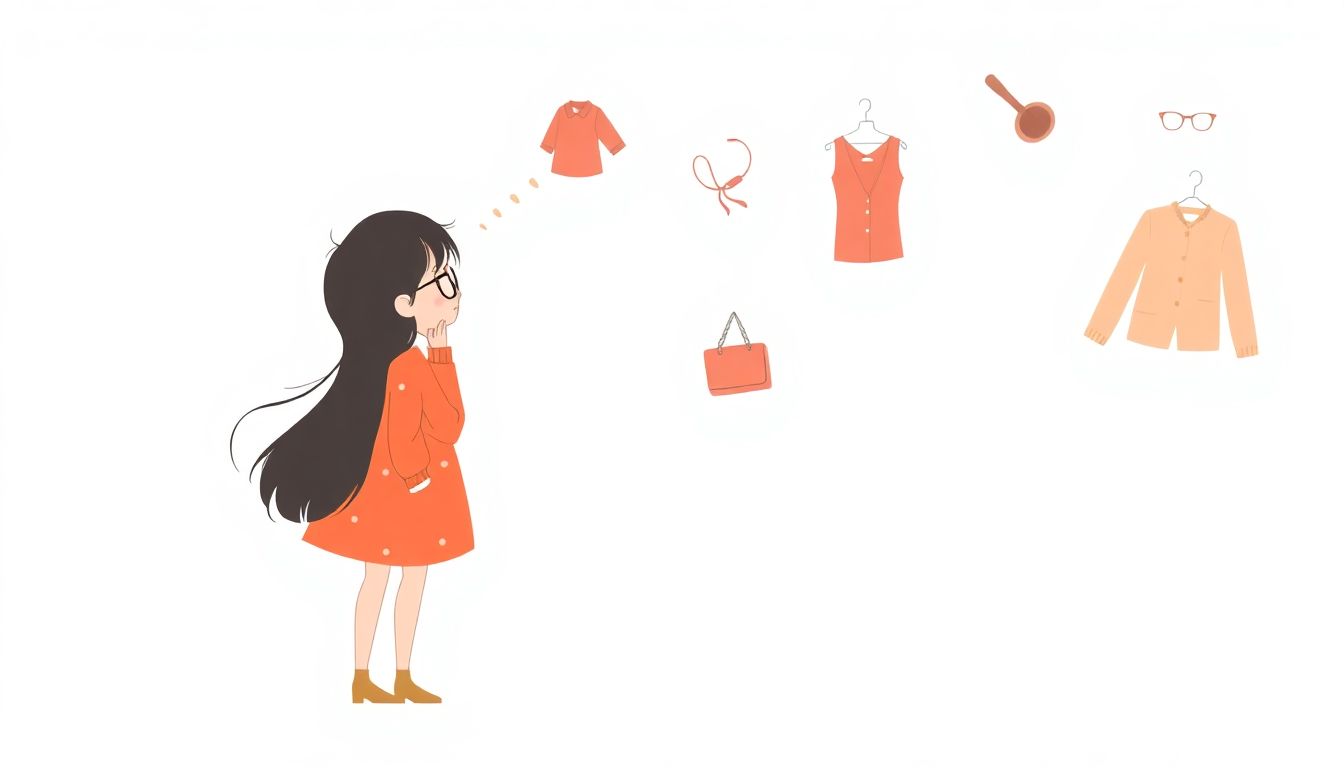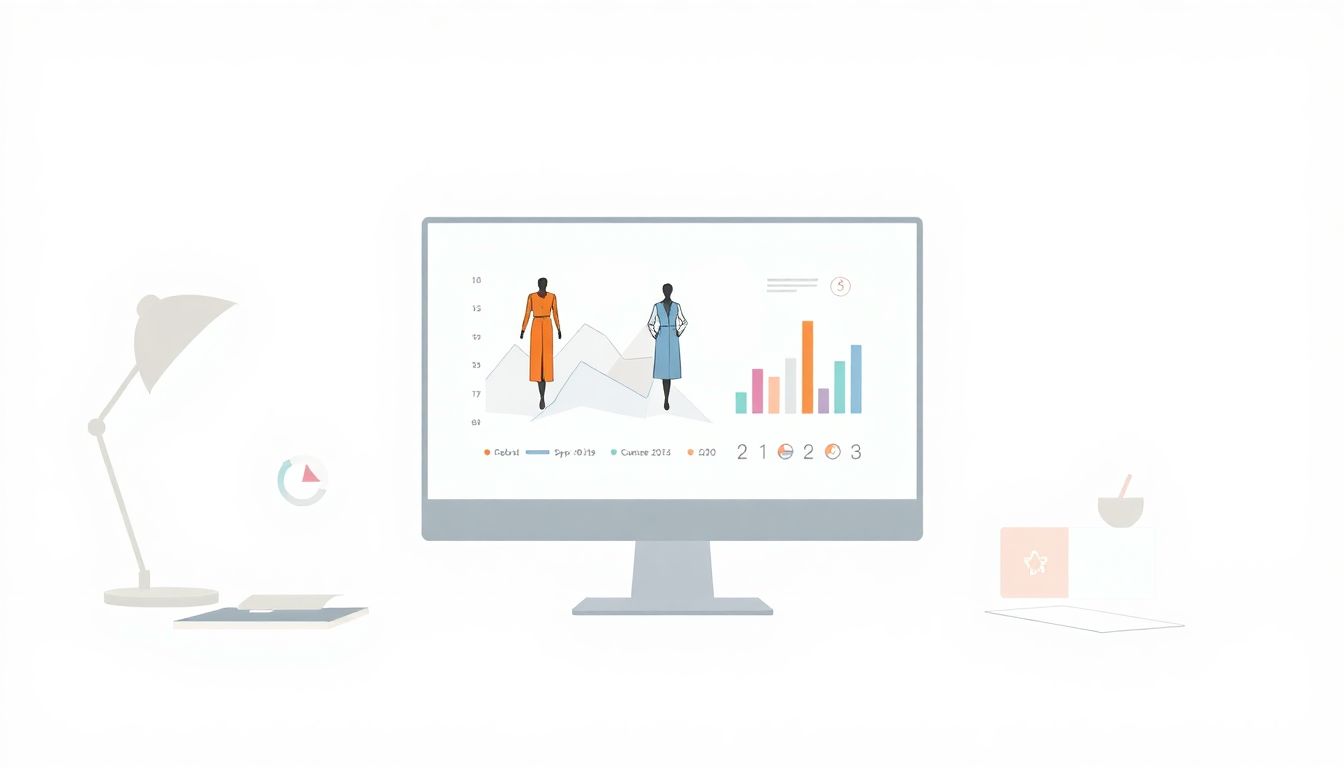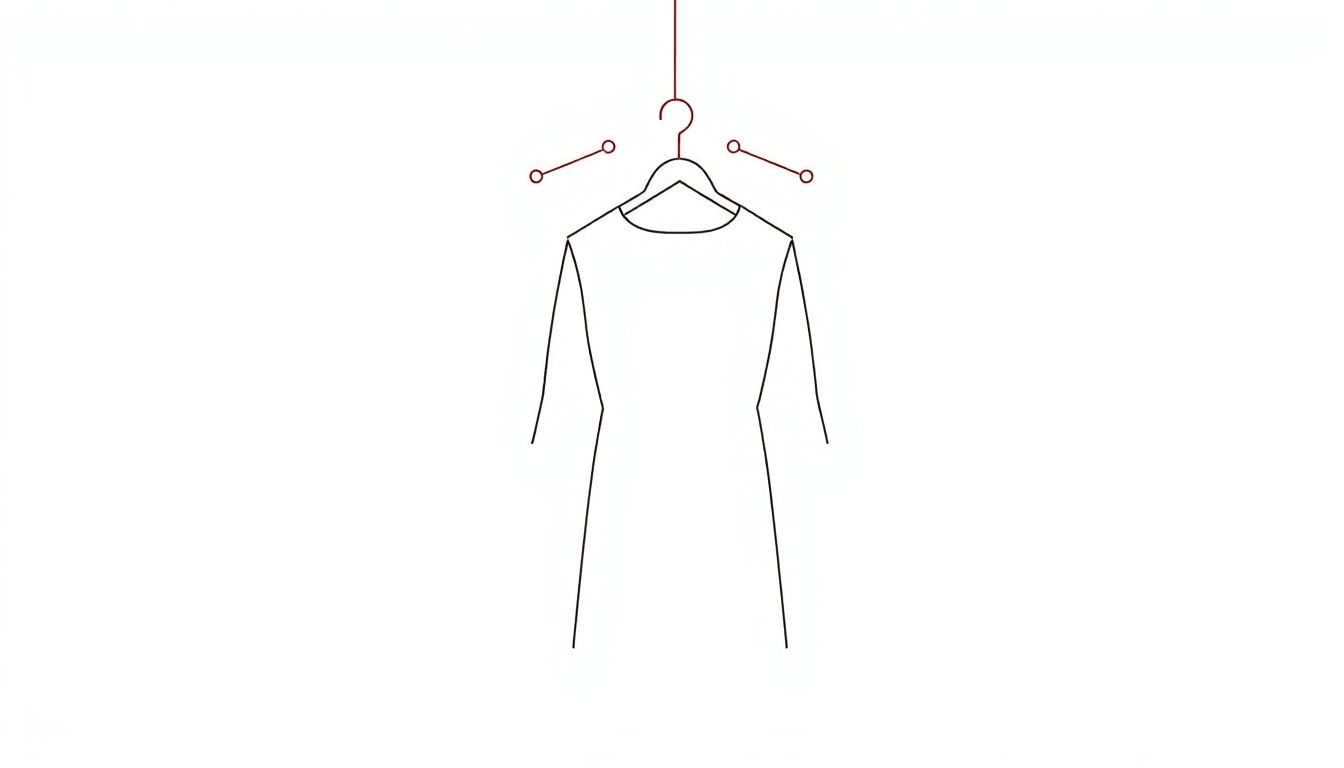Keeping up with fashion marketing trends can feel super tricky—you blink, and suddenly you’re marketing last year’s look. There’s so much changing, it’s hard to know what’s coming next or how to plan your strategies, right?
Good news: that’s exactly where ChatGPT can help you out. Stick around, and you’ll score some practical prompts, easy-to-follow tips, and clever ways to sidestep common mistakes when forecasting trends. Plus, you’ll see why AI can seriously improve your fashion marketing game.
Let’s jump right in!
Key Takeaways
- ChatGPT can help predict fashion trends quickly and accurately, giving marketers an edge.
- Use specific prompts tailored to your needs to get useful insights from ChatGPT.
- Avoid vague queries; add context to ensure you receive relevant information.
- Follow up on initial responses to deepen insights and clarify points.
- AI can save time and reduce costs while improving decision-making in fashion marketing.
- Combine AI insights with human judgment for the best results in your strategies.

ChatGPT Prompt to Forecast Fashion Marketing Trends
If you’re working in the fashion industry, forecasting trends accurately can give your business a big leg up over competitors. This is where a ChatGPT fashion prompt comes in handy.
Using carefully designed predictive prompts, you can make ChatGPT act as your personal trend analyst, providing valuable fashion industry insights to guide your marketing campaigns.
Here’s how you can use a fashion trend analysis prompt effectively:
Copy-and-paste ChatGPT prompts you can use right now:
- “Identify the top 5 emerging fashion styles popular on TikTok and Instagram among Gen Z consumers, and explain why they’re appealing.”
- “List upcoming color trends predicted for next spring-summer fashion collections, based on recent fashion week runway shows.”
- “Analyze current women’s sustainable fashion market trends, focusing on consumer preferences and popular brands.”
- “Provide insights on the impact of recent celebrity endorsements on sneaker fashion trends over the last three months.”
- “Generate a detailed forecast of denim fashion trends expected to dominate in the next autumn-winter season.”
Remember, prompt engineering isn’t just about throwing random queries at ChatGPT. You need good prompt customization, clarity, and context to get clear, actionable answers on market trend forecasting.
Once you master predictive analytics prompts tailored specifically for fashion marketing trends, you’ll start seeing clearer patterns to base your strategy around.
Why Use ChatGPT for Predicting Fashion Trends?
ChatGPT benefits in fashion prediction come down to speed, thoroughness, and accuracy without heavy manual work.
Think about it—we’re living in a fast-moving, digital-first fashion scene, and traditional market intelligence tools might leave you lagging behind.
One good reason to predict fashion trends with AI, like ChatGPT, is how quickly it processes broad datasets and delivers rapid data-driven predictions, way quicker than human manual research.
ChatGPT applications for fashion don’t just stop at spotting what’s cool right now—it can detect subtle consumer behavior analysis patterns that humans might overlook.
You get AI-generated trend insights that profile what your customers prefer, pointing straight at effective predictive fashion marketing opportunities.
Basically, AI-driven fashion forecasting gives you the ability to adapt your product lineups and marketing strategies more swiftly than competitors still relying strictly on traditional methods.
Example ChatGPT Prompts for Fashion Trend Analysis
To get practical, let’s show you some example fashion prompts that you’d find useful today.
These aren’t random ideas; they’re structured AI queries designed to give actionable fashion insights:
- “Spotlight key athleisure trends popularized by influencers in the past six months, and suggest similar styles that could trend soon.”
- “Provide an analysis of eco-friendly fabric trends in high-end men’s fashion for the next two seasons.”
- “Outline three key luxury handbag design trends currently emerging in European markets.”
- “Predict how streetwear styles will evolve in response to recent pop culture events and music collaborations.”
- “Analyze how vintage-inspired fashion has changed consumer shopping habits in the past year and suggest future possibilities.”
Using structured examples like these provides quick, practical results instead of guesswork.
If you enjoy these fashion-related prompts, you might also love exploring our post on ChatGPT prompts for creating persuasive product descriptions or discover how ChatGPT can help generate ideas in our article about writing video scripts with AI.
Tips for Creating Accurate Fashion Prediction Prompts
If you’ve tried ChatGPT and didn’t get precise predictions, don’t worry—you can fix it using a few easy tricks.
The key to effective AI trend prompts is precision prompt writing:
- Be Specific: Instead of “What’s trending in fashion?” ask “List emerging fashion trends of summer 2024 for women’s shoes.”
- Add Context: Provide clear context specificity to get tailored insights—mention demographic specifics like location, age group, or interests.
- Segment Your Audience: Audience segmentation makes your prompts more relevant. For example, say “trends preferred by urban millennials” instead of simply “popular trends.”
- Include Keywords: Use well-chosen keywords in your queries. Prompt customization with fashion-specific keywords like “sustainable,” “luxury,” “streetwear,” helps generate targeted results.
- Refine Your AI Queries: After ChatGPT responds, refine prompts based on initial outputs to drill down deeper. Simply ask follow-up questions like “expand on the second point” or “give me three specific examples.”
Remember, AI is as helpful as your question allows it to be, and ChatGPT prompt tips above should drastically boost your accuracy in trend forecasting.

How ChatGPT Can Improve Your Fashion Marketing Strategy
ChatGPT can help your fashion marketing strategy by generating quick and tailored insights on consumer preferences, competitor moves, and upcoming trends.
Forget general guessing—clear AI-generated information helps you make smarter decisions for campaign planning, product positioning, and audience targeting.
Here are actionable ChatGPT prompts you can use today to refine your marketing approach:
- “Identify the trending social media hashtags among fashion shoppers under 30 to optimize my Instagram marketing campaigns.”
- “Suggest three niche fashion communities or forums online where I can effectively market sustainable clothing.”
- “Provide insights on the types of fashion content performing best on Pinterest for targeting millennial women.”
- “Analyze successful competitor fashion campaigns focusing on Gen Z streetwear and give me five marketing strategies to consider.”
- “Recommend effective storytelling techniques used by emerging fashion brands on social media to boost audience engagement.”
Keep in mind, these ChatGPT fashion marketing strategies help you connect better with targeted customers, boosting overall ROI.
A truly personalized, data-backed approach gets the message across—you know exactly who you’re marketing to and what they want.
Common Mistakes to Avoid When Using ChatGPT for Trend Forecasting
Yes, ChatGPT is handy, but it’s easy to trip yourself up if you’re not careful.
Here are common pitfalls you’ll want to sidestep when asking AI for trend insights:
- Being too vague: Avoid generic prompts like “What’s hot in fashion?” or you’ll receive generic replies. Be detailed about your target market, geography, or time frame.
- Skipping follow-up questions: Don’t accept AI output without exploring deeper. Follow up with prompts like “Explain the first trend with examples.”
- Ignoring context: Always provide situational context for precise answers, such as specifying target demographics or recent industry events your query relates to.
- Overlooking human review: AI is great, but double-check its suggestions with human judgment—especially before significant business moves.
- Using outdated data: Remember ChatGPT’s knowledge cutoff date. To forecast effectively, combine ChatGPT insights with current market research.
Avoiding these prompt mistakes will give you clearer, more detailed outputs from ChatGPT.
Prompt refinement with clear, contextualized follow-up will pay off, especially in an industry as trend-sensitive as fashion.
Benefits of Using AI for Fashion Industry Trend Analysis
AI isn’t just fancy tech—it’s a practical solution bringing solid advantages in forecasting and trend analysis for fashion businesses.
For example, ChatGPT and similar AI tools give you clear benefits like:
- Speedy Insights: Gets you strategic market data faster than manual research methods—so you’re always a step ahead.
- Cost-Effective Analysis: Reduces spending on lengthy trend forecasting services, making strategic planning affordable at scale.
- Data-Driven Decisions: Delivers predictions based on broad datasets, making your marketing moves less risky and more calculated.
- Precise Audience Targeting: Helps you zero in on specific preferences, ensuring your products will actually resonate with targeted consumers.
- Scalable Research: Lets you quickly replicate trend analyses across different demographics or regions, minimizing work and maximizing results.
Using AI-driven fashion benefits means smarter marketing campaigns, streamlined product launches, and clearer competitive strategies.
It’s like having a personal, quick-thinking fashion analyst by your side, minus the hefty consultancy fees.

Limitations of ChatGPT in Fashion Trend Prediction
ChatGPT is great for trend predictions, but it’s not perfect—there are some drawbacks you should be aware of.
First off, ChatGPT doesn’t work with real-time data or the latest trends immediately because its knowledge is based on information available up until October 2023.
Fashion is a super dynamic industry, and trends pop up overnight—ChatGPT just can’t catch those up-to-the-minute shifts.
Another limitation is context sensitivity.
If your prompt lacks clarity or is too broad, ChatGPT may spit out generic insights that won’t make much difference to your marketing strategy.
It’s also critical to understand that AI can’t fully grasp subtle nuances of fashion symbolism, cultural variations, or emotional consumer response exactly as humans would.
Predictions made by AI tools like ChatGPT can sometimes miss the mark if they don’t fully ‘get’ what’s genuinely appealing or relevant.
Plus, ChatGPT depends totally on your prompt quality—poor prompts lead to less helpful trend predictions.
Always use AI alongside human instincts and judgment instead of relying solely on it as your decision-maker.
Final Thoughts on Using ChatGPT for Fashion Trend Forecasting
To wrap this up, ChatGPT can definitely boost your fashion marketing trend forecasts when used correctly, but it’s not a magic crystal ball.
Think of it as another super-smart assistant you have around the office, rather than an all-knowing fashion oracle.
Always pair AI suggestions with your industry knowledge and real-world data to make the best possible choices.
Keep refining prompts, asking detailed follow-up questions, and clearly stating context, timelines, and demographics.
Use ChatGPT prompts regularly to stay fluent in what’s engaging your audience and to quickly spot emerging trends.
Here are three final actionable prompts you can copy and use today:
- “Provide a list of five key fashion accessories trending among urban Gen Z customers for spring and explain why they’re trending.”
- “Suggest five upcoming fashion trends from European luxury brands and outline how they’ll impact global markets next year.”
- “Analyze recent social media campaigns by successful mid-market apparel brands targeting millennial women and suggest three campaign ideas inspired by their strategies.”
Use these detailed, actionable prompts to feed your campaigns, stay ahead of competitors, and sharpen your strategy.
With practice and smart prompts, you’ll turn ChatGPT into your secret weapon for winning at fashion marketing—just don’t tell your competitors!
FAQs
ChatGPT utilizes vast datasets and algorithms to analyze consumer sentiment, social media trends, and historical data, enabling marketers to forecast upcoming fashion trends effectively.
Common mistakes include providing vague prompts, relying solely on AI without human intuition, and ignoring seasonal variations that can impact trends and consumer preferences.
Limitations include inability to predict sudden market shifts, lack of real-time insights, and the risk of generating inaccurate or outdated trend predictions based on existing data.
AI enhances efficiency in trend analysis, provides data-driven insights, aids in identifying consumer preferences, and enables faster adaptations to changing market dynamics.
